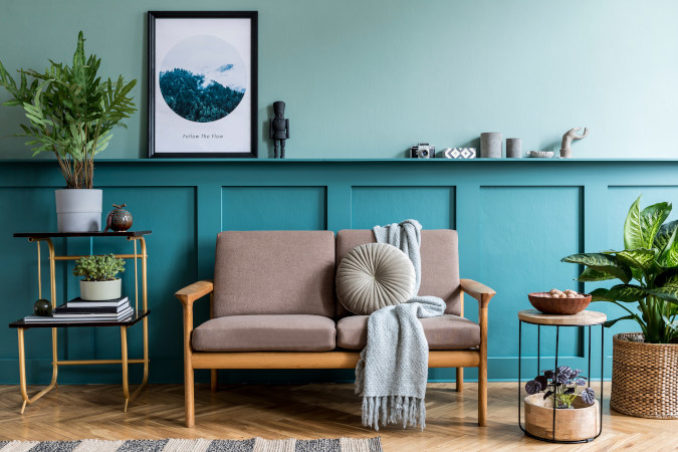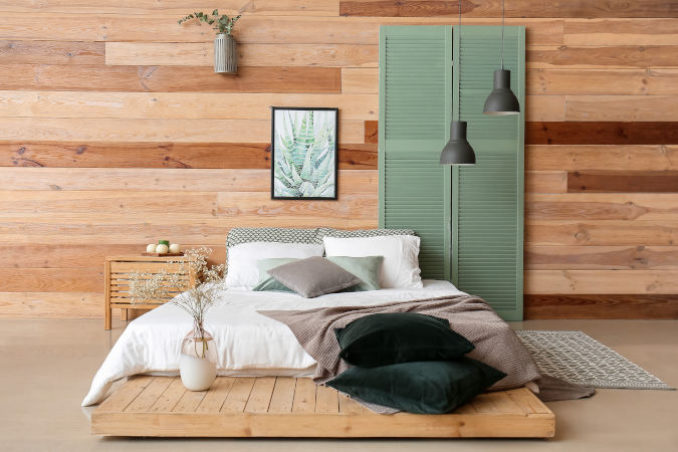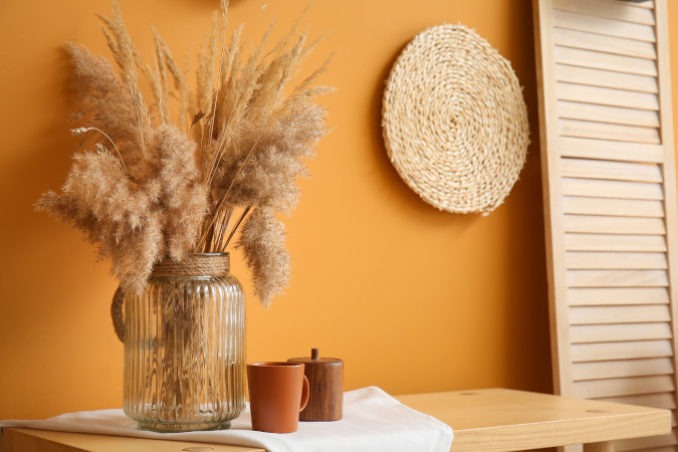
What are the main elements of the Japandi trend?
To really dig down into the spirit of Japandi, we need to appreciate what Japanese and Scandinavian aesthetics have in common – and also how they differ. For two styles to fuse together so beautifully, they need to grow from the same root with contrasting branches that create balance and harmony.
Minimalism
This is your root concept, and the basis for the interior design styles that we have seen come from both Japan and Scandinavia. Simplicity need not mean stark, and this is where the fusion style really comes into its own. Japandi minimalism gives a room a very special kind of feel, with a sense of intention and thought behind each piece of furniture or accessory.
Hygee
This classic Scandi concept is all about cosy, uncluttered decor that breeds contentment. It is a room that makes you want to stay there and wait out the winter! There is a reason that it is the origin of the word “hug”! Japandi takes the comfort of hygee and tempers the warm fires and soft furnishings with elegant craftsmanship and zen-like tranquillity.
Wabi-sabi
A traditional Japanese theory of aesthetics, wabi-sabi design appreciates the beauty of all things imperfect, impermanent, and incomplete in nature. This translates into interiors by celebrating the unique authenticity of the antique, pre-loved and bespoke. The intention that lies behind these decor decisions is a wonderful balance to Scandi functionality.
Sustainability
When combined, the Japandi aesthetic brings together two traditions that prize sustainability and are ideal for eco-friendly interior design projects. We have the natural and rustic materials of Scandi designs layered with the beautiful craftsmanship that we would expect to see in a Japanese inspired interior. Together, this look gives us the perfect opportunity to reuse, re-love, and rediscover.
Contrast
Too much of any one thing leaves a room feeling cold and clinical. This is why the contrast that is at the heart of Japandi works so well. We have the chance to layer together the sleek and the rustic, or contrasting shades of natural woods. Where Scandi styles can favour the washed out and bleached, Japanese pops of colour beautifully temper the aesthetic.

Incorporating Japandi style in your home
Like anything, interior design concepts do not have to exclusively take over your home. It can be a bit much! Incorporating Japandi style into your own individual preferences is far more achievable and joyful. But how do you get the balance right? The first thing to remember is not to force it. Find elements of Japandi that you love and place them with intention and thought.
Faux Minimalism
When the simplicity of Japandi relies so strongly on minimalist principles, what do you do in a busy home? Fake it of course! Try folding screens to hide any clutter, and invest in storage. Keep it organic, with large baskets and natural boxes. The only challenge is asking the rest of the household to remember to use them!
Statement Pieces
You really can change a room with a statement piece of furniture. But it takes investment – not necessarily of money, but time. It can be a labour of love to find the perfect piece of statement furniture that will transform your room. For a Japandi statement, look for pieces that celebrate the natural contours of wood. Whatever you choose, it should display craftsmanship and longevity.
Natural Materials
Sticking to the natural does not mean wooden everything. Think about woollens and cottons, warmth and the earth. Clay accessories and art that celebrates the natural world are a great place to start. Similarly, an abundance of plant life and greenery helps to bring nature inside.
Mixed Textures
Mix the sleek with the soft, the angular with the cosy. Japanese inspired lines should counterbalance richness and comfort. Team bamboo or wicker seating with plush blankets and silken throws, or vibrant plants atop a rustic side table.

The Japandi Aesthetic
As an interior design philosophy, Japandi style is really much more than a passing trend. It is a lasting marriage of two aesthetics that are born of the same principles. I love the emphasis of meaning and authenticity that this style embraces. Its fluidity means that rooms do not have to be markedly Japanese or Nordic, but instead are infused with intent and legacy. And that is something I can get totally on board with!
